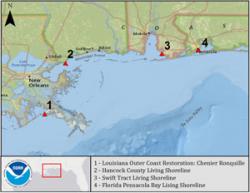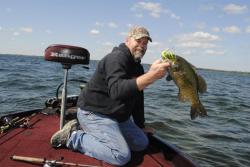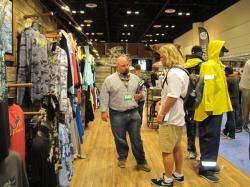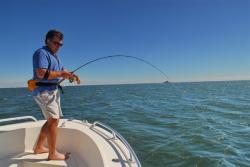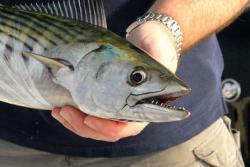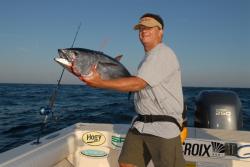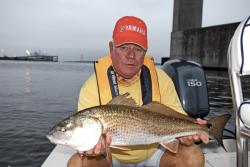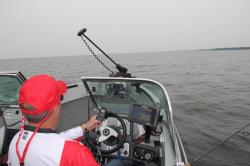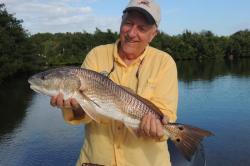I almost lost the only bass I hooked in my last club tournament when the spinnerbait I was using broke. At weigh-in, Blake Thompson told a sad tale of losing a huge bass – at least 8 pounds – when it broke his line. All fishermen have bad luck like that at times. However, there are things you can do to lower your chances of bad luck.
On Saturday before the tournament two weeks ago, I fished with Jim Stutts and his 16 year old son Jay. I met Jim when we fished together in a tournament in 1986. The first place we stopped Jim asked if I remembered the big fish he lost in that tournament in a treetop when it broke his line. He said I taught him a lesson he would never forget – re-tie your line if you get hung up.
He reminded me I had re-tied my line as we idled across the river in that tournament. We had been dragging spinnerbaits over stumps and getting hung up a lot. He didn’t take the time to re-tie his and broke off the big fish right after we started casting again. He said he always re-tied after getting hung up now, and reminded Jay to do so throughout the day.
Blake had been fishing rocks in the tournament two weeks ago, bumping a spinnerbait on them. He did not re-tie his 12 pound test line, although bumping rocks is the easiest way I know to damage your line. He hooked the big fish, it jumped and then broke off.
I learned my lesson the hard way also. Jim Berry and I were fishing High Falls soon after I moved to Griffin in the early 1970’s. I had not had a strike all day, and had gotten too lazy to re-tie my line. I cast into a treetop and a got my first strike. A five pound bass jumped when I set the hook and then ran under the boat. It broke my line. When I checked the broken end, it was very frayed. You can feel the rough line where it is messed up by rocks, limbs, docks and even fishes’ teeth.
When fishing, check your line and re-tie it regularly. If it feels rough, re-tie. Even if it doesn’t feel rough, I often hold the hook and jerk it much harder than a fish could, just to see if it will break. Sometimes the knot is weakened and you can’t tell until too late unless you stress it like a big fish might.
The lighter your line, the more often you should check it and tie a new knot. Heavy line holds up better but still needs attention. When fishing a Carolina rig with three knots, check all three often. Don’t lose the fish of a lifetime when you have that one chance because you didn’t take the time to tie a knot.
With spinnerbaits, you can not tell when they are going to break. If fishing for fun, I might take a chance on using a $5.00 spinnerbait over and over. In a tournament, when a bass could be worth hundreds of dollars, I will retire a spinnerbait after catching no more than three fish on it. It is just not worth taking a chance that the wire has become weak and might break.Will
